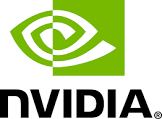$NVDA $NASDAQ $AI
#Nvidia #AIStocks #semiconductors #AItechnology #TechStocks #StockMarket #NASDAQ #ArtificialIntelligence #Investing #Chipmakers #USstocks #economy
The surge in artificial intelligence (AI) adoption is proving to be one of the most defining technological shifts of the decade. With companies racing to incorporate AI into their systems, the increase in demand for cutting-edge semiconductors has naturally placed Nvidia at the forefront. As one of the key suppliers of high-performance chips essential for AI development, Nvidia has seen its stock outperform the broader market in recent months. Investors have been on alert since Nvidia’s strong quarterly earnings results earlier this year, but many are now wondering whether the optimism is getting ahead of the reality, especially with the approach of the company’s next earnings report around November 20.
Recent developments support the long-term growth of AI and the broader tech ecosystem, which could further boost Nvidia. A strengthening U.S. economy, supported by healthy job numbers and solid corporate earnings, has helped drive the Nasdaq Composite to new highs, with Nvidia playing a leading role in this rally. Despite some volatility in broader tech stocks earlier this year, Nvidia’s role as a tech enabler in booming sectors such as cloud computing, gaming, and AI allows it to stay resilient. However, the risk of the AI bubble bursting is a growing concern among some analysts. They warn that high valuations could expose the stock to sharp pullbacks should economic conditions deteriorate or growth projections underperform.
From a broader perspective, Nvidia is still positioned for substantial growth over the next few years, thanks to robust demand from its AI and data center businesses. Its product portfolio, including its GPUs and its new AI platforms like the DGX Cloud, continue to capture momentum as businesses worldwide expand their AI use cases. The excitement surrounding AI-led innovations is evident, but these innovations also come with their own sets of risks, particularly if the U.S. economy doesn’t stay on an upward trajectory, spoiling demand for tech-heavy areas. Additionally, the tension between the U.S. and China over trade and technology restrictions could impact Nvidia’s international market share, given its significant exposure to Chinese firms.
In conclusion, Nvidia’s dominance in AI-related industries gives it long-term potential, but the stock may face near-term headwinds, especially as the market continues to assess whether AI’s upward trajectory can sustain its incredible rise. Investors eyeing Nvidia ahead of November 20 should watch closely for economic indicators, earnings guidance, and potential political developments that could impact the broader tech sector. Although the evidence of Nvidia’s strength is mounting, risk mitigation remains key for those considering investments, especially at current elevated valuation levels.











Comments are closed.